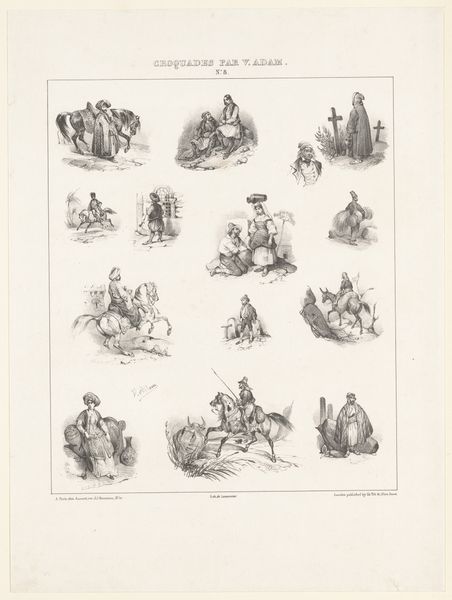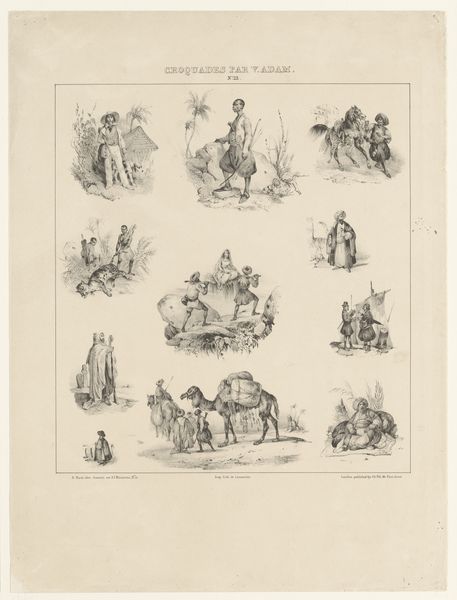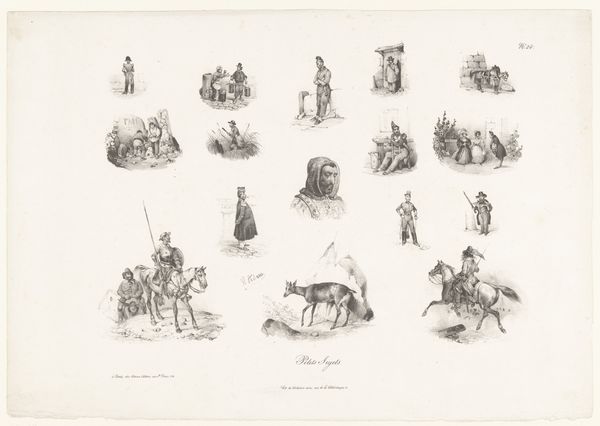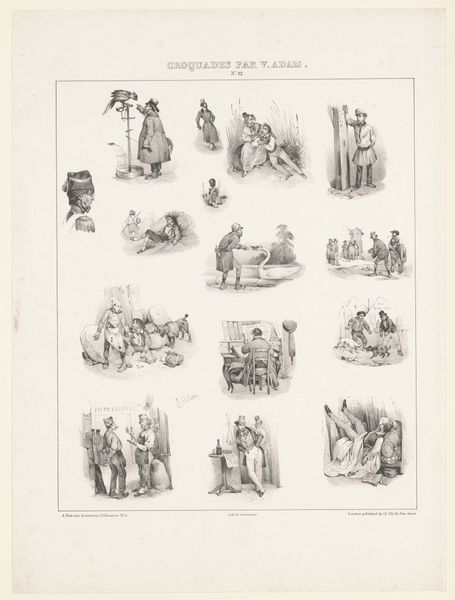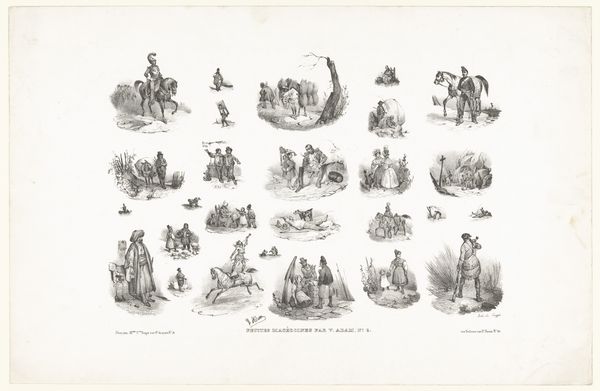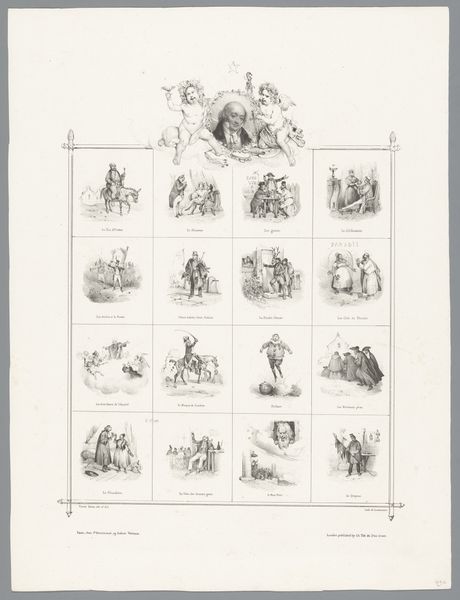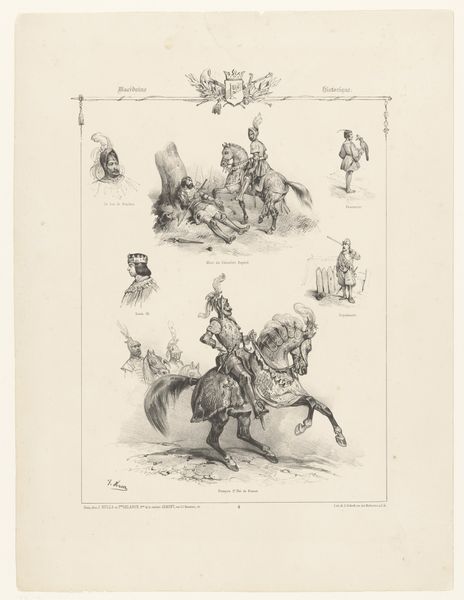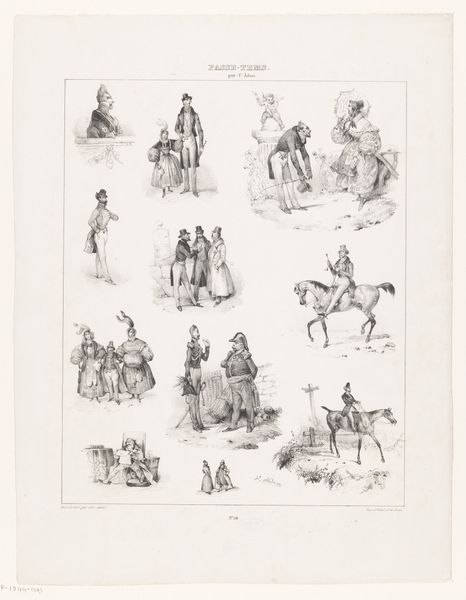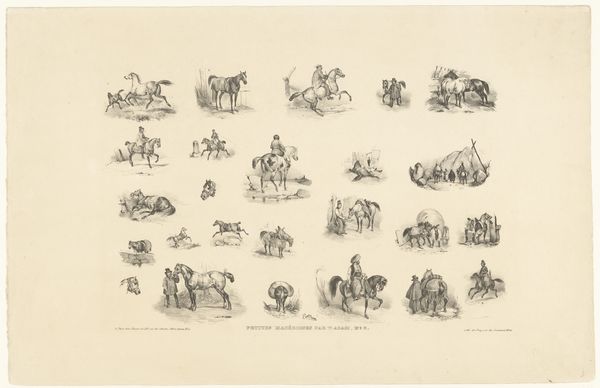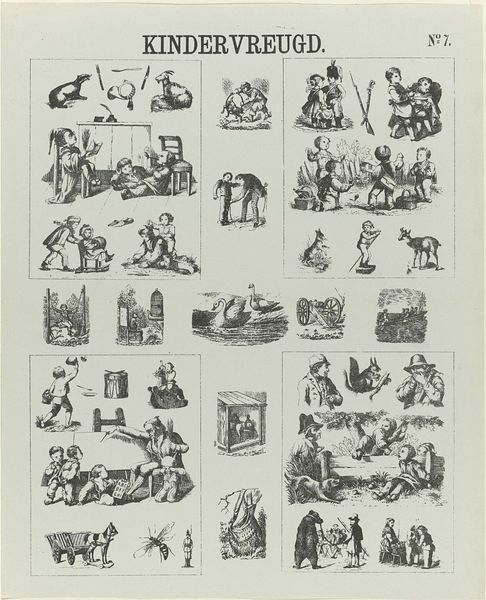
drawing, print, engraving
#
drawing
#
narrative-art
#
animal
# print
#
old engraving style
#
figuration
#
romanticism
#
genre-painting
#
engraving
Dimensions: height 354 mm, width 269 mm
Copyright: Rijks Museum: Open Domain
This lithograph showing nineteen vignettes of Chinese figures and animals was made by Victor Adam in the 19th century. Lithography is a printmaking process based on the simple idea that oil and water don’t mix. The artist draws an image on a flat stone or metal plate with a greasy crayon, then applies water, which is repelled by the greasy areas. When ink is rolled over the surface, it sticks only to the drawn image, which is then printed onto paper. Notice the incredible detail Adam achieved. The lithographic process allowed for relatively quick reproduction, which fuelled a boom in printed images during the 19th century. The medium democratized art, making images accessible to a wider audience than ever before, but also transforming it into a commodity. The cultural significance of this print lies in its reflection of Europe’s fascination with and often misinformed view of China during that time, alongside its role in the industrialization of art production. Lithography blurred the lines between fine art and commercial reproduction, challenging traditional hierarchies of art and craft.
Comments
No comments
Be the first to comment and join the conversation on the ultimate creative platform.
